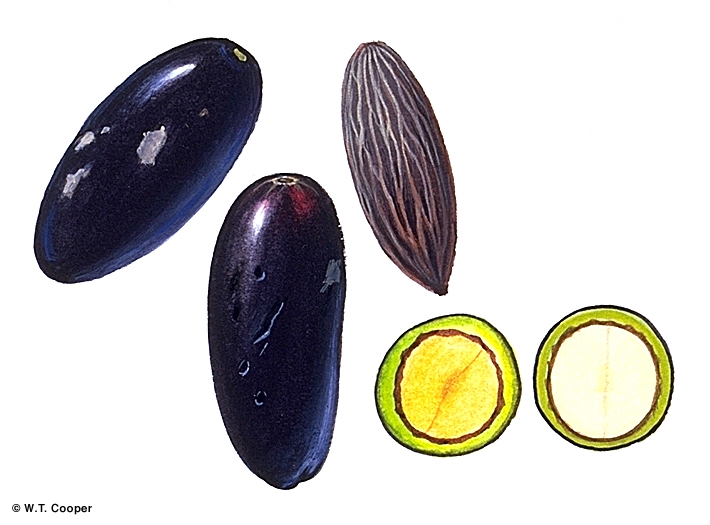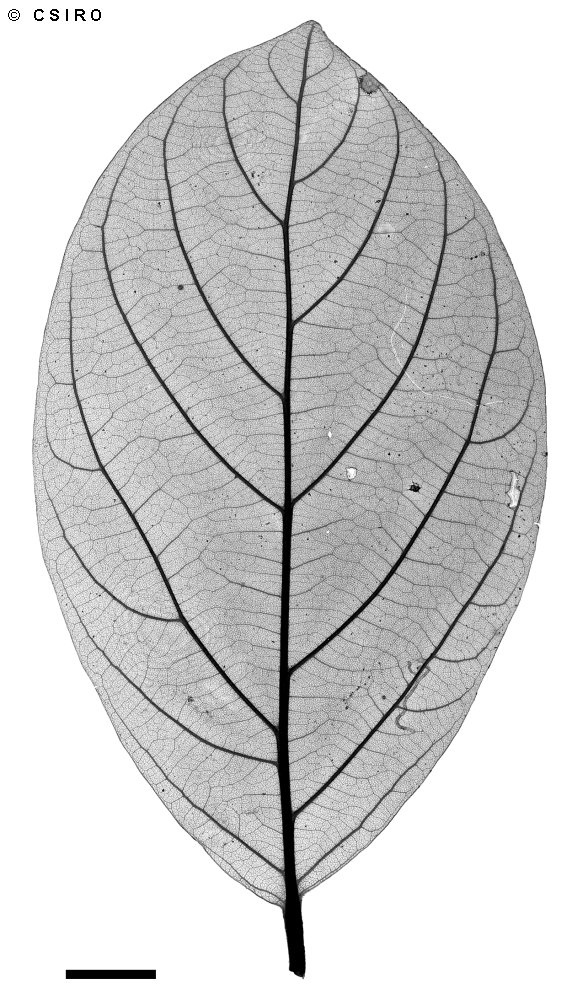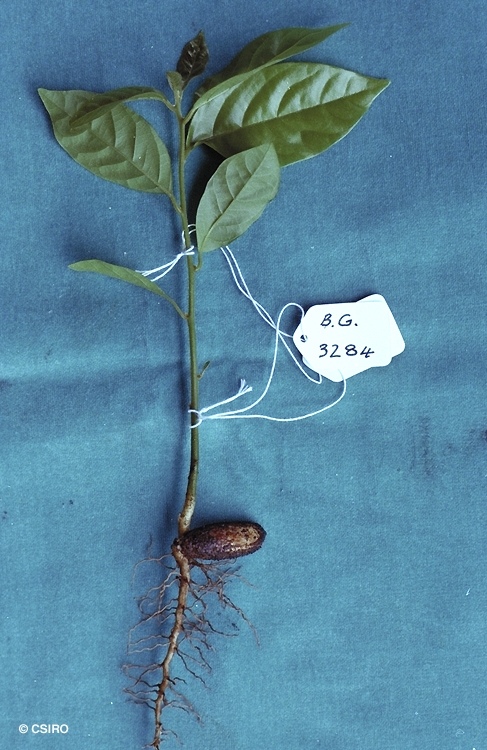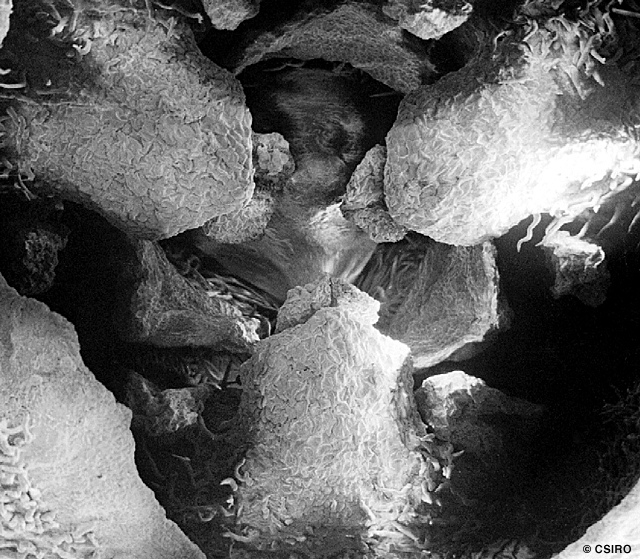Australian Tropical Rainforest Plants - Online edition
Endiandra monothyra B.Hyland subsp. monothyra








Hyland, B.P.M. (1989) Australian Systematic Botany 2: 240.
Near Mueller's Walnut; Rose Walnut; Walnut, Rose
Blaze odour may resemble guava (Psidium guajava). A thin cream or pale brown layer generally visible beneath the subrhytidome layer before the first section of the outer blaze.
Twigs fluted, clothed in tortuous, erect, brown hairs. Leaf blades about 6-15 x 2.5-7.5 cm, green on the underside, clothed in tortuous, appressed and erect, pale brown hairs when young, sparsely pubescent at maturity. Midrib and main lateral veins depressed and slightly hairy on the upper surface. Petioles flat on the upper surface. Oil dots visible with a lens.
Fruits usually ellipsoid, sometimes ovoid, narrowly ovoid or cylindrical, about 30-40 x 15-20 mm. Seed about 27-34 x 10-15 mm. Cotyledons cream or yellow.
First pair of leaves elliptic or ovate, about 40-75 x 16-35 mm, green on the underside. At the tenth leaf stage: leaves hairy on the upper surface at least along the midrib and main lateral veins; oil dots small, numerous, visible only with a lens; terminal bud, petiole and stem densely clothed in rusty brown hairs. Seed germination time 20 to 68 days.
Fruit eaten by Fruit Pigeons and Musky Rat-kangaroos. Cooper & Cooper (1994).
This subspecies grows large enough to produce millable logs. Wood specific gravity 0.74-0.86. Hyland (1989).





